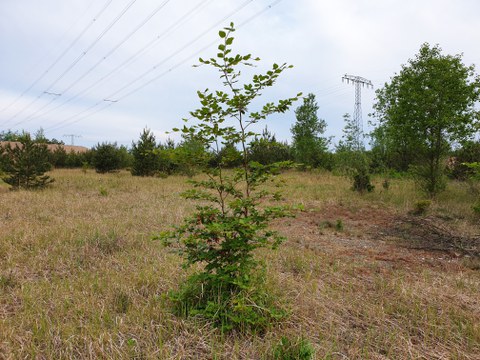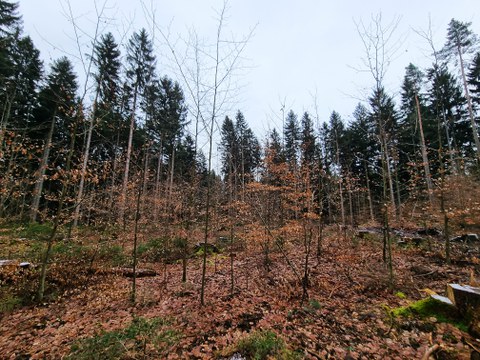Oct 21, 2022
Saplings can adapt to extreme heat and drought better than previously thought

Free-standing beech tree near the town of Riesa growing in sandy soil without irrigation. It has long shoots despite years of drought.
Extended periods of drought cause considerable damage to our forests. The scorching summer of 2022 provided strong proof of this. Heat waves like those experienced this summer and accompanying droughts are only expected to get worse due to climate change. This raises great concern about what effect this will have on our native forests. One of the most important species of tree is under particular threat – the beech. Yet a study published by Prof. Andreas Roloff at TU Dresden’s Institute of Forest Botany offers a glimmer of hope. While water scarcity is indeed devastating for older trees, saplings can apparently learn to adapt and manage with smaller amounts of water.
“Trees can adapt better than we previously thought,” says Prof. Andreas Roloff, who has studied beech trees in great depth. His study demonstrates that saplings in particular have much greater potential to adapt than older trees. Once they have already survived a period of stress, they are more likely to handle similar situations equally well or even better in the future. The study investigated how tree saplings grew over many years, both during the arid years of 2018 to 2020 and before. The result: During periods of drought, the saplings grew just as healthily as before, meaning they had no reaction to water scarcity.
Therefore, the fact that many older trees of a species are dying off does not mean that the saplings of the same species are just as delicate and are not suitable for future use because they have decades to adapt to changes, just as long as these don’t occur too quickly. The outcome can be denoted as acquired resistance.
“What’s amazing is that even species of tree that are typically quite sensitive to drought such as the European beech can still be found in dry areas, and they remain completely vital after three dry summers and continue to grow ‘unbothered.’ This illustrates that conditioning is possible if the trees learn how to cope with stress factors early enough,” Prof. Roloff says.

Young beech trees in the Tharandt Forest with long shoots despite years of drought.
Trees adapt to environmental changes in different ways, for instance by developing smaller leaves with a thicker wax coating on the surface. The growth rings become thinner in drier years. Roloff says that the observed adaptability applies to more than just beech trees. He also observed 20 other species of tree that typically grow in Germany. These include maples, oaks, lindens, ashes and locusts.
“I’m optimistic that pretty tremendous adaptation is underway and will hopefully occur in many species of tree,” says Andreas Roloff.
Older trees are sometimes less flexible and die off as a result of drought at higher rates. The potential loss of old or ancient beeches is still a hard blow for biodiversity, as these trees in particular play a decisive role in preserving the ecosystem, as another recent study shows.
The TU Dresden study “Annual shoot length of temperate broadleaf species responses to drought” has been published in “Urban Forestry & Urban Greening.”
The investigation “Ancient trees: irreplaceable conservation resource for ecosystem restoration” appears in “Trends in Ecology & Evolution.”
Contact
Prof. Andreas Roloff
TU Dresden
Institute of Forest Botany and Forest Zoology
+49 351 463 31202
http://tu-dresden.de/forstbotanik
